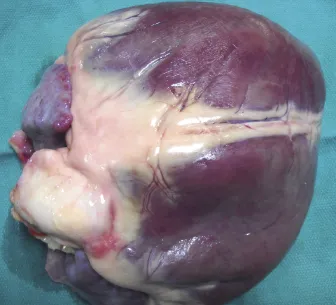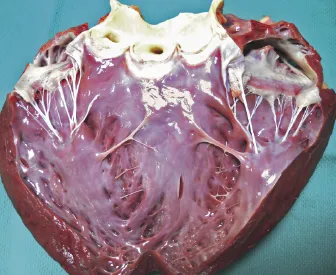
- English
- ePUB (mobile friendly)
- Available on iOS & Android
Color Atlas of Equine Pathology
About This Book
Color Atlas of Equine Pathology offers a practical guide to identifying equine diseases, presenting a single resource with more than 1000 images showing predominantly gross pathology. Organized by body systems, the book allows for picture matching during or after an equine necropsy. In this user-friendly atlas, each chapter takes a common format, presenting the disease process as well as congenital, degenerative, inflammatory, and neoplastic sequences, with text boxes offering quick reference to key information.
The book begins with an introductory chapter summarizing the principles of the equine field necropsy, and subsequent organ-based chapters depict gross features of disease, focusing on macroscopic digital images supplemented by histology and immunohistochemistry when necessary. Some clinical information for correlation with pathology is included. Color Atlas of Equine Pathology is an essential resource for diagnostic veterinary pathologists and pathology residents, as well asfor equine practitioners performing necropsies in the field.
Frequently asked questions
Information
I. General considerations
II. Techniques
1. Positioning, examining, and opening of the carcass
2. Evisceration of the abdominal, pelvic, and thoracic organs





a. Cranial mesenteric artery
3. Removal of the brain and spinal cord
Table of contents
- Cover
- Title page
- Copyright page
- Contributors
- Preface
- Acknowledgments
- 1: The Equine Necropsy
- 2: Diseases of Foals and Juveniles
- 3: Diseases of the Nervous System and Peripheral Nerves
- 4: Diseases of the Respiratory System
- 5: Diseases of the Cardiovascular System
- 6: Diseases of the Gastrointestinal System
- 7: Diseases of the Liver and Pancreas
- 8: Diseases of the Urinary System
- 9: Diseases of the Muscular System
- 10: Disease of the Skeletal System
- 11: Diseases of the Endocrine System
- 12: Disease of the Reproductive System
- 13: Diseases of the Skin (Integument)
- 14: Diseases of the Eye and Ear
- 15: Diseases of the Hemolymphatic System
- Appendix A: Equine Diseases without Pathology
- Appendix B: List of Equine Neoplasms
- Appendix C: List of Equine Infectious Diseases Foreign to North America
- Index